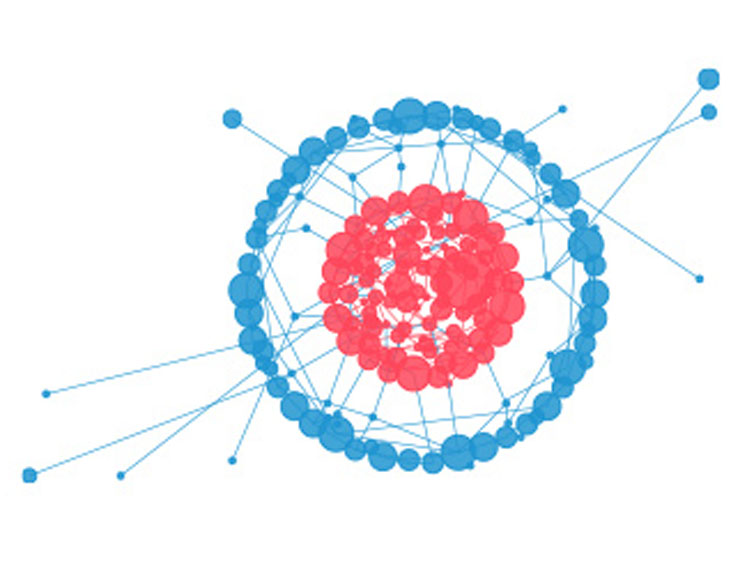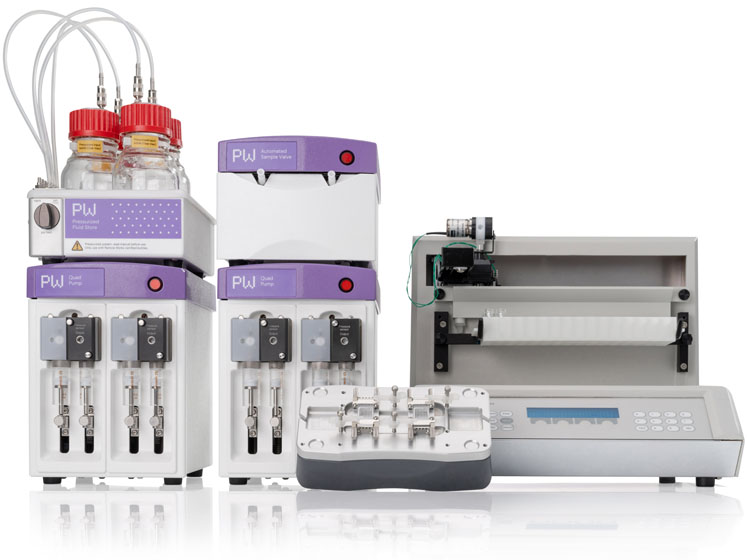Depending on the composition of the nanoparticles, these formulations can help to prevent premature metabolism, increase penetration of the cell membrane or even target specific tissues. Creating optimised nanoparticle formulations can be tricky, however, as it is difficult to achieve consistent and reproducible production of monodisperse particles using conventional methods.
Dr Julia Rashba-Step (pictured) is the VP of R&D and Alliance Management at Phosphorex, a contract development and manufacturing organisation (CDMO) specialising in the formulation and manufacture of particles. In this article, Julia talks about how the organisation is using microfluidics to help its clients accelerate nanoparticle fabrication and the development of new nanomedicines.
Interest in nanotechnology, including both polymeric and lipidic nanoparticles (LNP), has grown significantly in the last decade. The tremendous success of LNP-based mRNA vaccines during the COVID-19 pandemic has led to further explosive growth and new opportunities in this area.
Nucleic acids — including plasmid DNA, oligonucleotides, small interfering RNA (siRNA), messenger RNA (mRNA) and microRNA (miRNA) — have shown a lot of promise to treat complex diseases. However, the effectiveness of these therapeutic agents strongly depends on them being able to reach the target tissue without deteriorating en route.
Nanoparticles are excellent delivery vehicles for drug molecules as they are capable of supplying the active pharmaceutical ingredient (API) to a specific action site while protecting it from premature degradation. At present, most of the effort in vaccine and API delivery is still focused on LNPs, but nanoparticles formed from biodegradable polymers such as PLGA (poly lactic-co-glycolic acid) also offer an excellent alternative approach to achieving controlled release.
Roadblocks to LNP production
Unfortunately, nanoparticle fabrication brings with it several challenges and finding the correct nanoparticle composition can be complex and extremely resource intensive. Properties such as the monodispersity of the particles are extremely important, but current nanoparticle production methods are either batch-based or use large-scale continuous flow equipment, such as membranes, which produce inconsistent particle sizes.

These techniques also have poor encapsulation efficiency — the amount of drug or other cargo that ends up in the particle — and require constant revalidation, resulting in the wastage of expensive materials and valuable time. The minimum sample size for existing fabrication methods is also typically large, further exacerbating the problem with the high costs and limited availability of specialised lipids and the API.
In addition, most drug development projects have very tight timelines, so it is necessary to rapidly establish a cost-efficient method for large-scale particle-encapsulated drug production once a good candidate had been discovered.
An alternative route to particle formulation
Developed in response to these limitations, microfluidics is emerging as an excellent alternative for nanoparticle fabrication; it allows experiments to be done with small quantities of materials and offers exceptional particle size monodispersity and encapsulation efficiency.
The technique can also be scaled-up to high throughput without requiring any changes in the fundamental particle formation method. Phosphorex, a CDMO that specialises in the formulation and manufacture of particles, is taking advantage of a dedicated nanoparticle production platform — the Automated Nanoparticle System (ANP System, Particle Works) — which uses microfluidics to offer the automated set-up and processing of multiple samples.
The ANP System optimises the fabrication process through the rapid and automatic modification of different microfluidic parameters — such as flow rate or temperature — to find the ideal particle size, shape and structure, and has the potential to improve tissue targeting and drug encapsulation.
The workflow begins with the lipid and cargo being loaded into software-controlled reagent injection loops — the sole manual step in the protocol — and then the system executes a series of experiments automatically, controlling pump operation, loop switching and washing without operator input.
The system reliably and repeatably generates particles ranging from 40–800 nm and automation streamlines the screening of nanoparticles against a wide range of biological targets to allow the selection of candidates with the most promising performance.

Other parameters — such as stability, charge, solubility and viscosity — can be easily adjusted by using different lipids, reagents and microfluidic chips. Nanoparticle production rates in this new system range from 100 µL/min to 16 mL/min per channel, allowing the Phosphorex team to work with small amounts of material during the development stage (reducing the wastage of expensive APIs early on).
Automation allows the process to then be scaled-up to a higher throughput without the need to revalidate the protocol at every stage — providing both fast and economical operation and improving throughput. To date, the system has been used by Phosphorex to successfully fabricate mRNA LNPs with a controlled particle size of 80–150 nm and an mRNA encapsulation efficiency of up to 98%.
The road ahead
There are now plans to develop a fully automated, lab-scale system that will be able to generate LNP libraries of 10–96 samples per run from precursor lipids and cargo. The platform will enable collection of samples ranging in volume from 250 µL to 2 mL in sealed microplates, with a full system wash of all wetted parts between samples to ensure there is no cross-contamination.
Phosphorex is currently collaborating with Particle Works to work on system validation, as well as providing input for the development of GMP production systems.
Summary
Automated lipid nanoparticle production offers a complete and convenient nanoparticle fabrication pathway, stretching from initial protocol development all the way to final manufacture and cutting out the need to continually change and revalidate methods between stages. Thanks to the ANP System, the team at Phosphorex now has a flexible and cost-effective tool to generate new LNP libraries and optimise the whole production process.
The platform allows better control of particle size distribution and, crucially, improves API encapsulation efficiency. The system is also highly scalable as it operates in continuous flow and can incorporate multiple microfluidic chips working in parallel, ensuring that the same method can be used from start to finish.
This innovative automated microfluidics set-up has significant potential for reducing common barriers to progress in nanoparticle-based therapies, such as time delays and financial limitations, contributing to advances in the clinical development of nanomedicines.
